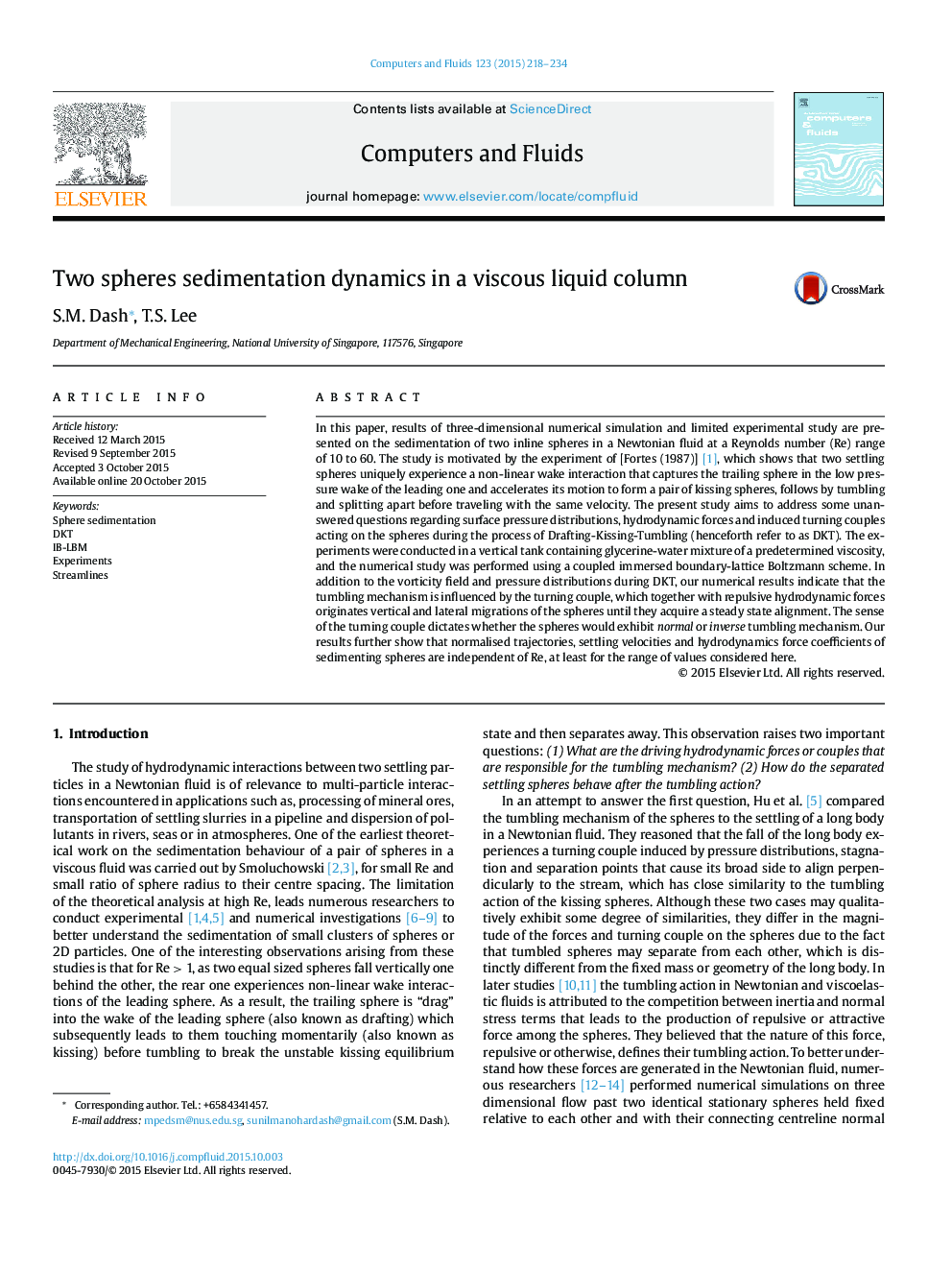| Article ID | Journal | Published Year | Pages | File Type |
|---|---|---|---|---|
| 761258 | Computers & Fluids | 2015 | 17 Pages |
•Experimental and numerical study of two sphere sedimentation.•Identification of the hydrodynamic force during DKT behaviour.•Flow field analysis that provide root cause of DKT phenomena.•After DKT, a new steady, Re dependent separation region is discussed.•Characteristic time and velocity scale are defined for low Re independency.
In this paper, results of three-dimensional numerical simulation and limited experimental study are presented on the sedimentation of two inline spheres in a Newtonian fluid at a Reynolds number (Re) range of 10 to 60. The study is motivated by the experiment of [Fortes (1987)] [1], which shows that two settling spheres uniquely experience a non-linear wake interaction that captures the trailing sphere in the low pressure wake of the leading one and accelerates its motion to form a pair of kissing spheres, follows by tumbling and splitting apart before traveling with the same velocity. The present study aims to address some unanswered questions regarding surface pressure distributions, hydrodynamic forces and induced turning couples acting on the spheres during the process of Drafting-Kissing-Tumbling (henceforth refer to as DKT). The experiments were conducted in a vertical tank containing glycerine-water mixture of a predetermined viscosity, and the numerical study was performed using a coupled immersed boundary-lattice Boltzmann scheme. In addition to the vorticity field and pressure distributions during DKT, our numerical results indicate that the tumbling mechanism is influenced by the turning couple, which together with repulsive hydrodynamic forces originates vertical and lateral migrations of the spheres until they acquire a steady state alignment. The sense of the turning couple dictates whether the spheres would exhibit normal or inverse tumbling mechanism. Our results further show that normalised trajectories, settling velocities and hydrodynamics force coefficients of sedimenting spheres are independent of Re, at least for the range of values considered here.
